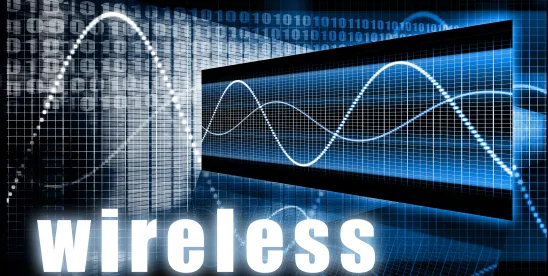The wireless industry has revolutionized the way we connect, from facilitating teleworking, distance learning, and telemedicine to allowing the American public to interact virtually in almost all other aspects of their daily lives. Leading policymakers – federal regulators and legislators – are making it a top priority to ensure that the wireless industry has the tools and resources it needs to keep pace with this evolving landscape. This blog provides monthly updates on actions by federal regulatory bodies responsible for communications policy and Congressional efforts to support wireless connectivity. And this month we highlight the release of the National Spectrum Research and Development Plan.
Regulatory Actions and Initiatives
Spectrum
The White House Releases National Spectrum Research and Development Plan. On October 9, 2024, the White House announced that the Office of Science and Technology Policy released a National Spectrum Research and Development Plan, which was directed by last year’s National Spectrum Strategy. The Plan contains areas of potential focus for federal government spectrum research, but it does not direct the initiation of the research and development efforts described, noting that agencies require funding to engage in those efforts. The White House notes that the Plan will “serve as a tool to guide government decisions on spectrum-related research, shape private sector efforts, and provide a shared reference for stakeholders . . . to ensure continued U.S. leadership in spectrum R&D.”
The FCC Takes Another Step to Increase Use of the 4.9 GHz Band. The FCC released its Eighth Report and Order on October 22, 2024, to further optimize use of the 4940-4990 MHz (“4.9 GHz”) band for public safety operations while also facilitating access by commercial wireless technologies, including 5G. The FCC previously established a framework for the 4.9 GHz band under which the spectrum would remain primarily available for public safety uses, but it could also be used on a secondary basis for non-public safety services. The FCC also decided that the 4.9 GHz band would be overseen by a nationwide band manager, who would coordinate use of the spectrum and ensure that any non-public safety use remains fully secondary to, and preemptible by, public safety operations. The Eighth Report and Order confirms that the band manager, once selected, will be eligible to apply for a nationwide overlay license for the spectrum. It also authorizes the band manager to enter into a sharing agreement with the First Responder Network Authority, which, in turn, may use unassigned spectrum in the 4.9 GHz band as part of its nationwide public safety broadband network.
The FCC Continues to Grant Relief to Service Providers Due to Severe Weather. As severe weather, including Hurricanes Francine and Helene, continued to surge throughout the Nation, the FCC’s Wireless Telecommunications Bureau (“WTB”) and the Public Safety and Homeland Security Bureau (“PSHSB”) granted various forms of relief to wireless communications service providers.
- On October 2, 2024, the WTB and PSHSB released a Public Notice applying extended filing and regulatory deadlines to counties that are experiencing damage due to Hurricane Helene in Florida, Georgia, North Carolina, South Carolina, Tennessee, and Virginia. Among other things, the Bureaus extended until October 29, 2024, any deadlines that occurred from September 23, 2024, to October 28, 2024, for certain Wireless Radio Service applications, notifications, reports, other regulatory deadlines. They also waived, through October 28, 2024, certain FCC rules to allow Special Temporary Authority for Wireless Radio Services to be requested by means other than electronic filing of FCC Form 601, such as by telephone calls to FCC staff.
- On October 8, 2024, the WTB released an Order granting Federated Wireless Inc.’s (“Federated’s”) request for a waiver of the FCC’s rules that require Environmental Sensing Capabilities (“ESCs”) in Dynamic Protection Areas (“DPAs”) to detect and protect federal incumbent users in the 3.5 GHz band from harmful interference. It also released an Order granting a similar waiver request from Google LLC (“Google”). The WTB granted these requests to enable Federated and Google to treat the DPAs in affected areas as “inactive” for the duration of the waiver authority, relieving their ESCs of detection obligations, and to provide uninterrupted service to thousands of Citizens Broadband Radio Service Devices that provide critical broadband, IP telephone, and television services. Like prior waiver Orders, the WTB imposed conditions on the ESC operators, including that they must immediately activate the subject DPAs upon notification from the FCC, the National Telecommunications and Information Administration, or the Department of Defense.
- On October 11, 2024, the WTB and the PSHSB released a Public Notice applying extended filing and regulatory deadlines to additional affected areas experiencing damage due to both Hurricanes Helene and Milton. The content of the Public Notice is the same as the Public Notice released on October 2, 2024 (see first bullet above). A complete list of the extended filing and regulatory deadlines can be found in the Appendix to the Public Notice.
Wireless Networks and Equipment
The FCC Adopts 100% Hearing Aid Compatibility Requirements for Wireless Handsets. On October 17, 2024, the FCC adopted a Report and Order establishing a 100% hearing aid compatibility requirement for all future wireless handset models offered for sale or use in the United States, additional coupling and volume control requirements on all new handset models, and revised labeling, website posting, and reporting requirements for mobile service providers and handset manufacturers. The adopted version of the Report and Order differs slightly from the draft version on which we previously reported. In particular, among other things, it (i) allows handset manufacturers and service providers to use “best efforts” to make available handsets for consumers to test in each retail store; (ii) encourages (but does not require) handset manufacturers and service providers who use digital labeling to provide information on handsets in languages in addition to English, such as Spanish; and (iii) adds a new de minimis exception to the prohibition on handset manufacturers and service providers from lowering a handset model’s conversational gain through a software push.
The FCC Grants Additional Relief to Rip-and-Replace Support Recipients. The FCC’s Wireline Competition Bureau released a Public Notice on October 31, 2024, announcing that it has granted five requests for extension of support recipients’ rip-and-replace deadlines. The grant of these requests continues to be based on funding and supply chain issues.
The FCC Issues a Protective Order on Handset Unlocking. The WTB released a Protective Order on October 4, 2024, in the FCC’s proceeding on whether mobile service providers should be required to unlock wireless handsets within a certain timeframe. The Protective Order principally serves to (i) limit access to proprietary or confidential information that has been or may be filed in the proceeding, and (ii) more strictly limit access to certain particularly competitively sensitive information. Eligible parties seeking access to confidential information must sign and date the Acknowledgment attached to the Protective Order, agree to be bound by the terms and conditions of the Protective Order, and file the Acknowledgment with the FCC.





 />i
/>i
